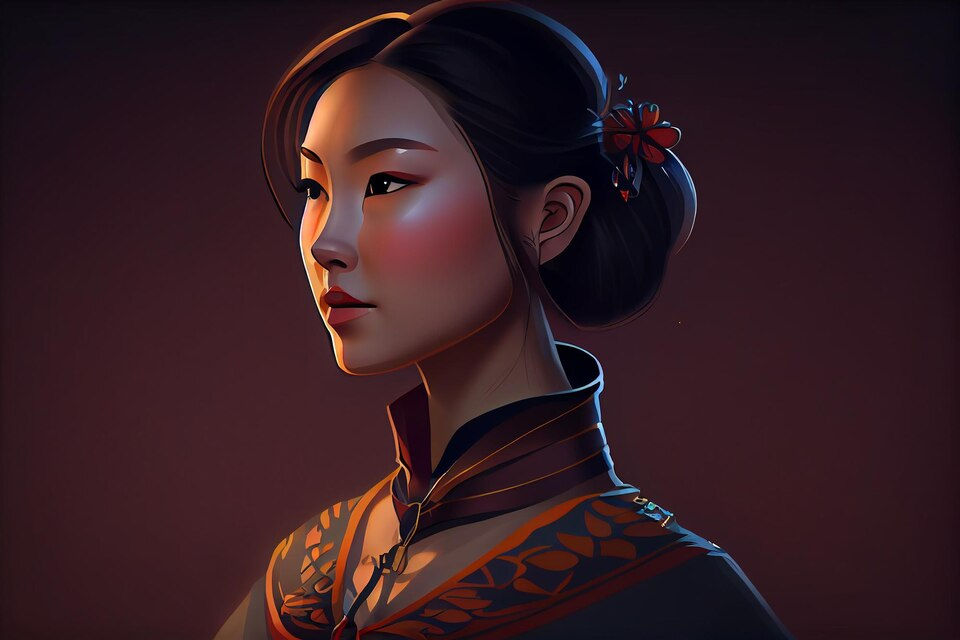
Artists may create stunning graphics by using text-prompt-based AI programs like Midjourney. Photoshop comes to the rescue! This lesson will go through five methods for resolving frequent Midjourney artwork issues in Photoshop.
The Most Common Midjourney Image Issues
Despite all of the acclaim and excitement surrounding artificial intelligence, it is still incapable of performing fundamental sketching tasks. Most new artists would have learned these skills by now if they had begun when Mid Journey initially debuted online. Everything else that Mid trip "gets right" in minutes is simply remarkable.
But first, let's speak about a few issues that, as of this writing, haven't been resolved for numerous Mid trips, Version 4 challenges.
⦁ Details on the face, notably the eyes & teeth.
⦁ Strange objects that don't appear to belong are thrown in at random.
⦁ Too many fingers and unusual methods of gripping objects, particularly with the hands.
⦁ Extra limbs or incomplete limbs.
⦁ Feet and toes that are unsightly.
⦁ The artist's name appears at the bottom of certain images.
⦁ When individuals are doing anything, their bodies take on unnatural postures.
Users who like MidJourney may choose to contribute to this list. The good information is that a lot of these issues may be resolved with the help of Photoshop. Before we start, we'll show you how to use Mid Journey to create AI art if you've never used it.
Make selections using the Lasso Tool.
To repair damaged pixels in your Midjourney artwork, open Photoshop and choose one of your improved Midjourney Variations. The subject will determine the tool you choose. When we replace an eye, we will use the Lasso tool to circle the eye. Because you can always conceal them, you can circle additional pixels than you need. Ctrl + J will copy the selected area to a new layer.
Drag the layer to the Midjourney file that we were working on before. We now have a fresh set of eyes to work with on the original file. Keep in mind that there are other methods to pick items in Photoshop. If you have a lot of pixels to deal with, we teach you how to use the Subject Select tool.
Cover faulty pixels with the transform tool.
Photoshop's Transform tool is your best friend when fixing poor pixels in your Midjourney artwork. Once you've placed the additional pixels on a new layer, you may use the Transform tool by pressing Ctrl + T.
The artificial eye was then placed over the subject's right side. We changed the eye size with the handles to ensure it fit better, then clicked OK. The new eye is rather appealing. We must mask off the pixels we dislike to clean it up.
Use the Brush Tool to tidy up the selection.
Then, we'll use the Brush tool on the new layer to eliminate the pixels we don't want. If you're still learning Photoshop, we'll show you how to use the Brush tool. To prepare for this stage, create a layer mask, select one Soft Round brush, and set the Foreground color to black. Then, paint over any unwanted pixels.
We have covered three fundamental tools; the transform tool, the Lasso tool, and the Brush tool. All three were utilized to accomplish the same task: to include pixels from a Variant into the initial Midjourney picture. This procedure may also replace additional organs like limbs, fingers, and toes.
The Clone Stamp Tool may be used to fix pixels during a route.
This tool is excellent for blending groups of pixels that need to blend in with their surroundings. The rising steam near the man's face in the following image seems more like cigarette smoke than the far more abstract steam beneath it. Let's use the Clone Stamp tool to eliminate this problem area.
We'll begin by creating a blank layer to work without harming anything. Then press S to activate the Clone Stamp tool and remove the fog. See our step-by-step instructions if you've forgotten Photoshop's Clone Stamp tool. We can repair items like the mug's additional handle and the strange-looking tools now that the smoke has cleared.
To have maximum control, create a blank layer for each neighborhood you work on. This Midjourney piece of art now appears much better thanks to the Clone Stamp tool. Depending on the setting, you may also use the Spot Healing Brush, Healing Brush, and Patch tools to do the same thing.
Neural Filters Can Enhance Midjourney Art
Photoshop's Neural Filters may greatly improve the aesthetic of your Midjourney paintings. We'll focus on the Harmonisation tool since it's perfect for building composites. In this scenario, we wish to hang a café menu on the wall behind the guy. We'll add the menu to our Midjourney project and mask it using the Lasso, Transform, and Brush tools.
It seems to be an excellent menu. However, we may enhance it by using the Harmonisation tool to alter the colors and exposure to match the original picture. The menu now blends in a lot better with the background. To make the picture stand out less, we increased the Strength slider and made it darker and less saturated.
Conclusion
We demonstrated five essential tools and methods for improving your Midjourney art. Of course, several more tools and capabilities in Photoshop might assist you in repairing your artwork. But this should get you started on resolving the most frequent issues with your Midjourney work, and you don't have to worry about tossing it away since it's not perfect.
